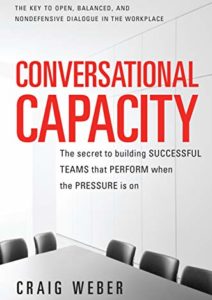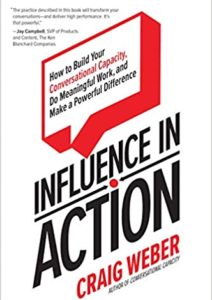When Good Intentions Aren’t Good Enough:
Intentional conflict is not when someone purposefully creates clashes in the workplace. Rather, intentional conflict is something that is created and done with a specific goal in mind. External intentions, which are usually good, can often counteract internal intentions like avoiding conflict, not upsetting someone, defensiveness, etc. For example, you might go into a meeting with good intentions of wanting to give a colleague useful feedback, but in order for them to hear it in a kind way and avoid any sort of conflict, you water down the response, don’t say enough, or bring it up casually in a passive way. Intentional conflict becomes the solution in a scenario like this, where you intentionally act in a way that contradicts the resistance that you might be feeling, and create conflict anyway. Recognize your emotions and the fear of creating conflict, and then act more intentionally despite how you might be feeling. This is at the center of creating conversational capacity within yourself and within your team.
Establish a Shared Goal:
One of the best ways to cut through potential damage caused by conflict is to establish a shared goal amongst opposite parties. Even if it’s a very basic goal, it gets both people on the same page and sets the intentionality of the conversation. The goal is not always to see things the same way, but it could be to use the difference in opinion to expand and improve thinking or the decision making process. The goal could also be to continue a conversation, despite being at odds with each other. Being able to disagree and have the discussions anyway can be vital, as opposed to avoiding the conflict and the discussion, and missing out on learning and growth opportunities.
Learning as a Key Objective:
If you want to get better at working in a candid and curious state, learning needs to be the key objective. The ability to set aside emotions in the name of learning means utilizing a lot of vulnerability, which can be quite frightening for many people. However, the people at the table with the different points of views are the most important people in the meeting because they present an opportunity to learn, rather than an obstacle to work around. Having learning in the driver’s seat is not about getting an ego massage, but about generating clear thinking to make good choices, and ensuring that fear of conflict does not get in the way of learning from people who think differently. If learning is set as a key objective, it can be a vessel to ride out any potential storm caused by the conflict of disagreement.
Curiosity and Candor:
There are two major traits that, when operationalized, become very important for learning how to create intentional conflict and continued learning: curiosity and candor. An example of a curiosity skill is to test your perspective, and explore what’s missing. This opens up an opportunity to invite people to clarify their thinking by encouraging them to give their feedback. An example of a candor skill is to put your view on the table and explain the thinking that got you to that viewpoint. This candor requires vulnerability, but it creates an opportunity for people to give you real






Comments